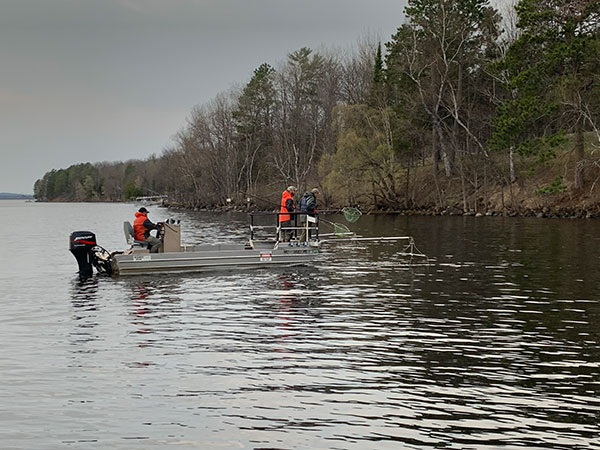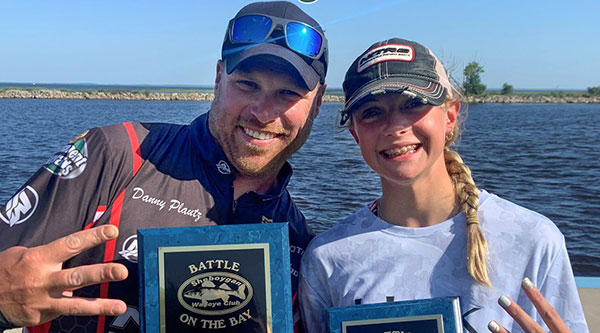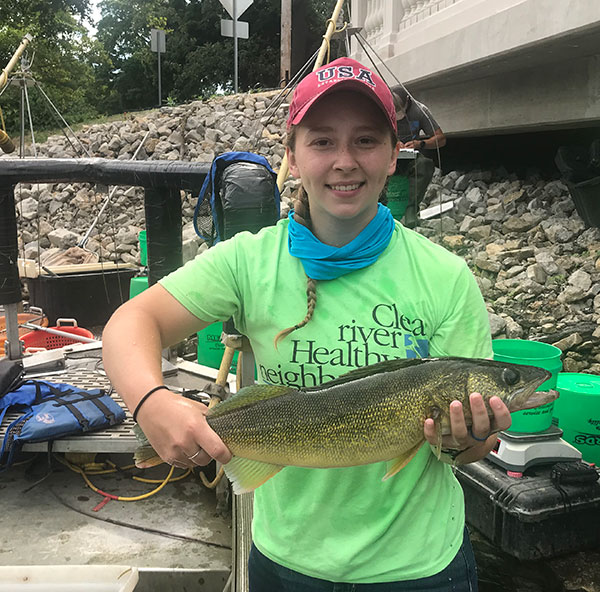- Details
MDNR Report
 Walleye Electro-fishing
Walleye Electro-fishing
Beginning in late September through early October, anglers throughout the state are asked to be on the lookout for Michigan DNR personnel conducting walleye recruitment surveys – a tool that helps fisheries managers determine how many walleye either were produced naturally or survived stocking in 2022 (commonly referred to as a given year’s “young-of-year” fish).
Using electrofishing boats, crews will survey the shallow areas near the shoreline of lakes at night with the goal of capturing young-of-year walleye. On larger lakes, two or more electrofishing crews using separate boats may operate at the same time to cover more area.
The crews will work both on lakes that have been stocked with walleye and lakes that have not.
“Conducting surveys on both stocked and unstocked lakes can affect decisions about future walleye research and stocking efforts and give valuable insight into the status of the younger walleye in the system," said Emily Martin, DNR Fisheries Division biologist.
- Details
Mercury Report
 Danny Plautz and daughter Maggie
Danny Plautz and daughter Maggie
Like a lot of young ladies, 12-year-old Maggie Plautz has a lot on her plate.
For much of the year the rising eighth-grader from Lake Mills, Wisconsin, has dance classes up to six days a week, and, in season, also has a full slate of basketball practices and games. Not to mention keeping up with her schoolwork, an area in which she also excels. And like many kids from the Upper Midwest, she enjoys deer hunting and loves to go fishing with her father whenever she can.
But that’s where the similarities end between Maggie and the average tween. Sure, it’s fun when she goes fishing with her father, professional walleye angler and Mercury Pro Team member Danny Plautz, but they’re playing on a whole different level than the average father-daughter outing. Danny and Maggie have been fishing area walleye tournaments for about two years now, and the pairing is certainly not just a novelty. In fact, they’ve more than held their own in one of the most competitive walleye fishing regions in the country. However, it’s just another extracurricular activity for the youngster, with the added bonus of getting to spend time with her father.
“It’s really just for fun,” she said. “I don’t think of it as anything but fishing with my dad. I love doing it, and it’s just an activity. And I like the experience of standing next to him in front of an audience on the stage.
- Details
By Louie Stout
 St. Joe River Walleye
St. Joe River Walleye
The bluegill and walleye population in Indiana waters of the St. Joseph River are doing quite well, according to Dar Deegan, aquatic biologist for Elkhart and South Bend.
The biologist spends many hours on the river each year surveying water quality and the health of fish populations.
He is somewhat concerned, however, about the diminishing sucker population which was once the dominate species that has now been replaced by sunfish populations.
While that may be good news to gamefish anglers, he is concerned that falling numbers of suckers signals a change in the food web. Suckers serve as an indicator to water quality issues.
“Suckers are a sensitive group of fish that feed on the equally sensitive critters on the bottom of the river,” Deegan explained. “This could be caused by the introduction of gizzard shad, zebra mussels as well as big flood events or even drought periods.”
Oddly enough, he noted that sunfish populations – to include bluegill, crappie, rock bass and long-ear sunfish – have exploded since shad showed up in the system. Shad compete for food with young gamefish.
“The river has cleared up with the zebra mussels’ influx which has led to different levels of sunlight penetration and more plant growth, so those things may play a role in sunfish expansion,” Deegan added. “Agriculture also is doing a better job with conservation land practices and it’s reducing some of the run-off problems coming into the river.”





